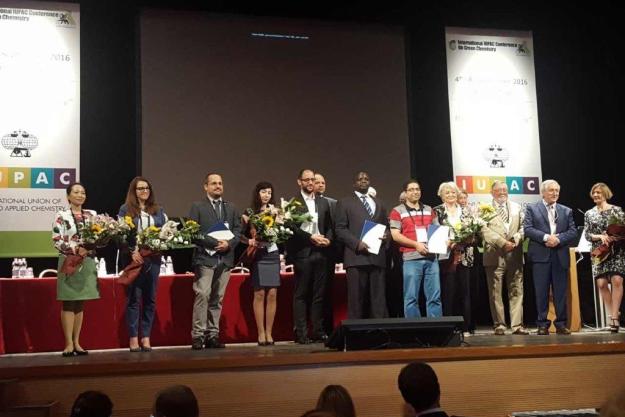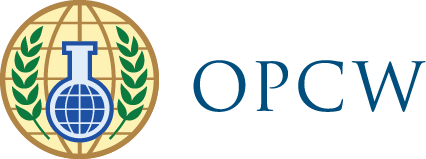
1) The winners of the IUPAC/UNESCO/PhosAgro research grants on green chemistry for young scientists at the opening ceremony. 2) OPCW at the exhibition session of the conference.
“To turn war chemistry into green chemistry, we need to find alternatives to toxic chemicals used in industrial production processes,” said Xiaohui Wu, Head of International Cooperation Branch of the Organisation for the Prohibition of Chemical Weapons (OPCW) during her presentation at the 6th International Union of Pure and Applied Chemistry (IUPAC) Conference on Green Chemistry, held in Venice, Italy on 4-8 September 2016.
This prestigious event gathered hundreds of scholars from more than 70 countries to discuss new frontiers in clean and sustainable chemistry connecting experts from diverse fields such as industrial production, chemical disarmament and the pursuit of peaceful uses of chemistry.
During the conference Ms. Wu spoke about the OPCW green chemistry initiative to promote non-toxic substitutes. Furthermore, OPCW Education and Outreach Advisory Board Member, Professor Alastair Hay, spoke about The Hague Ethical Guidelines and stressed that green chemistry can support the aims of the CWC by helping to reduce, or even fully eliminate, the use of toxic chemicals.
Experts from the government, academia and industry actively participated in many discussions on green applications for substitutes for toxic chemicals. Those who attended the conference also expressed their appreciation for the OPCW initiatives that are helping advance safer and more secure industry practices when handling toxic chemicals.
As part of its efforts to support young scientists for the promotion of the peaceful uses of chemistry, the OPCW also supported the attendance of a number of participants to the Conference, including three winners of the UNESCO/PHOSAGRO/IUPAC green chemistry research grants for young scientists.
For more details:
- The Hague Ethical Guidelines
- OPCW Advisory Board on Education and Outreach
- OPCW Convenes Inaugural Experts Group Meeting on Green Chemistry
- Sixth International IUPAC Conference on Green Chemistry
